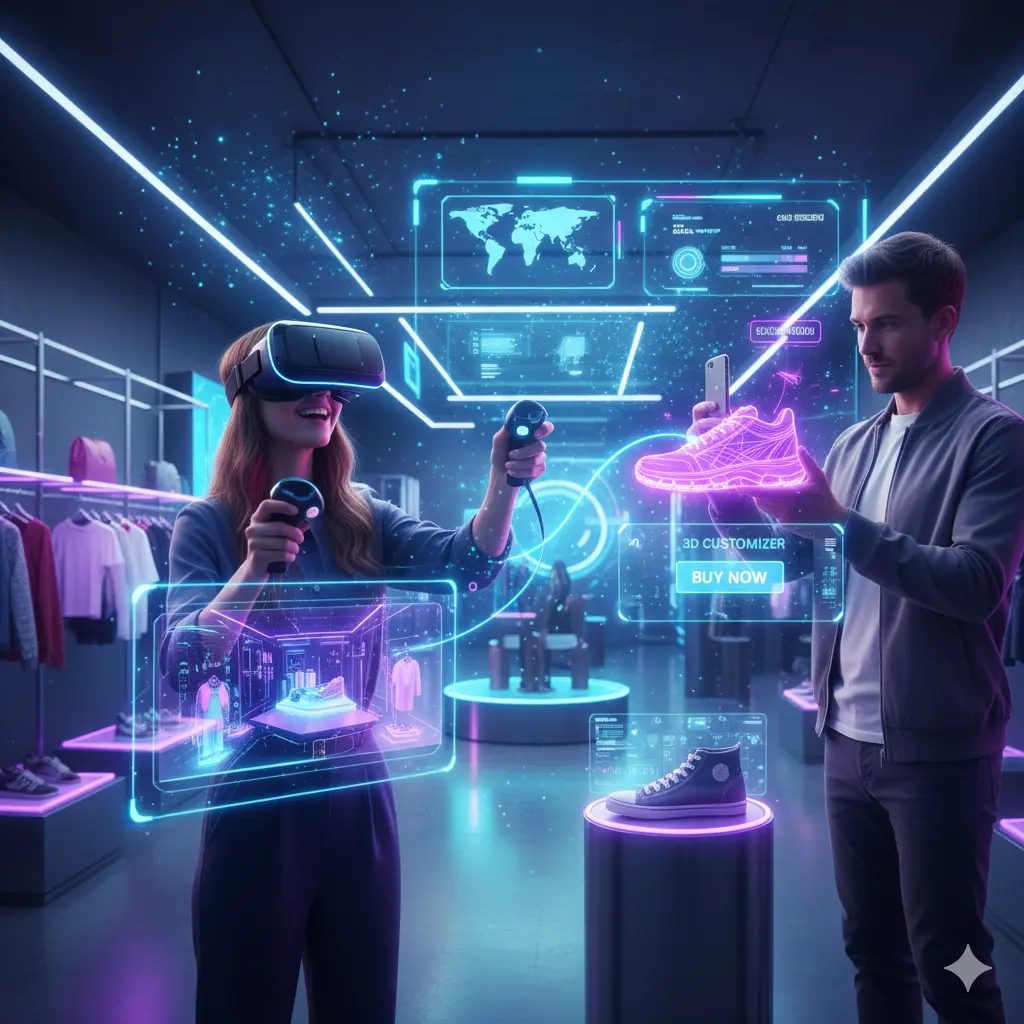The world of marketing is evolving faster than ever, and brands are no longer just selling products — they’re selling experiences. Augmented Reality (AR) and Virtual Reality (VR) have emerged as transformative tools that allow consumers to engage with brands in ways that were once unimaginable. From virtual try-ons to immersive brand storytelling, these technologies are shifting consumer expectations and redefining how brands connect with their audiences.
The Rise of Immersive Marketing
Immersive marketing leverages AR, VR, and mixed reality to create interactive, engaging, and memorable experiences. Unlike traditional advertising, which relies on static visuals or passive consumption, immersive experiences actively involve the consumer.
Brands across industries — from fashion and retail to real estate and automotive — are adopting these technologies to provide deeper engagement. By offering hands-on virtual experiences, brands can differentiate themselves, increase brand recall, and drive customer loyalty.
AR vs VR: Understanding the Difference
Augmented Reality (AR) overlays digital content onto the real world. Examples include AR filters on Instagram, Snapchat, or virtual try-on tools for eyewear and cosmetics. AR enhances reality rather than replacing it, making it ideal for interactive marketing campaigns.
Virtual Reality (VR), on the other hand, creates a fully immersive digital environment. VR experiences can transport users to virtual showrooms, interactive brand worlds, or product simulations. While VR requires more hardware like headsets, it delivers a highly engaging and memorable experience.
Both technologies enable brands to interact with consumers on a deeper level, transforming traditional marketing into a multi-sensory journey.
Why Brands Can’t Ignore the Experience Shift
Consumer expectations are evolving. Today’s audiences crave interactive, personalized, and memorable experiences rather than simple advertisements. Immersive marketing fulfills this demand by:
- Allowing try-before-you-buy experiences online
- Creating gamified interactions that engage users
- Delivering storytelling that resonates emotionally
For example, IKEA’s AR app lets customers visualize furniture in their homes before making a purchase, enhancing confidence and reducing returns. Similarly, Nike’s VR campaigns provide interactive storytelling that immerses users in the brand’s ethos, forging a stronger emotional connection.
The Role of AR in Retail and E-Commerce
AR has revolutionized retail and e-commerce by bridging the gap between online and offline experiences. Consumers can use AR to try on clothes, experiment with makeup, or see how furniture fits into their homes. This not only enhances the shopping experience but also boosts conversion rates and reduces cart abandonment.
Social media platforms have amplified the impact of AR. Filters, lenses, and interactive AR ads allow brands to engage younger audiences while collecting valuable data on preferences and behaviors. AR creates a fun, interactive, and shareable experience, turning users into brand ambassadors.
VR: Redefining Storytelling and Engagement
While AR enhances reality, VR replaces it entirely, offering fully immersive brand experiences. VR is particularly powerful for storytelling, training, and simulations. Travel brands, for instance, use VR to transport users to destinations, giving them a taste of the experience before booking. Automotive brands allow users to explore cars virtually, from interior features to test drives.
VR creates emotional engagement, a key factor in driving brand loyalty. When consumers feel immersed in a narrative, they form stronger memories and connections to the brand. This level of engagement is hard to achieve with traditional media.
Measuring the Impact of Immersive Marketing
Investing in AR and VR is not just about novelty; it’s about measurable outcomes. Brands track engagement rates, dwell time, conversion rates, and social shares to assess the effectiveness of immersive campaigns. High engagement often translates into increased sales, brand awareness, and customer retention.
Additionally, immersive marketing provides data-driven insights. Interactions within AR and VR environments can reveal user preferences, behavior patterns, and engagement points, allowing brands to optimize future campaigns.
Challenges and Considerations
Despite its potential, immersive marketing comes with challenges:
- Cost and accessibility: VR hardware and AR app development require investment
- User adoption: Not all consumers are familiar with immersive technologies
- Content creation: Developing high-quality AR/VR experiences demands creativity and technical expertise
Brands must weigh these factors and start small, experimenting with AR filters, interactive apps, or VR showrooms before scaling immersive campaigns. The key is to deliver value and usability, not just gimmicks.
The Future of Brand Experiences
The future of marketing is experiential. As AR glasses, VR headsets, and mixed reality devices become mainstream, immersive marketing will become a standard rather than a novelty. Brands that adopt these technologies early will set new benchmarks for engagement, personalization, and loyalty.
AI integration will further enhance immersive experiences, creating adaptive and personalized interactions. Imagine entering a virtual store where every product is curated based on your preferences, or attending a live virtual concert tailored to your music tastes. Immersive marketing will redefine how consumers interact, shop, and experience brands.
Conclusion: Embracing the Experience Shift
AR and VR are no longer optional tools for brands — they are essential components of modern marketing. Immersive marketing allows brands to create memorable experiences, strengthen emotional connections, and differentiate themselves in an increasingly crowded digital landscape.
The shift from traditional advertising to experiential engagement is clear. Brands that embrace AR, VR, and immersive storytelling will not only capture attention but also build lasting loyalty in an age where consumers crave interaction, personalization, and authenticity.

Leave a Reply